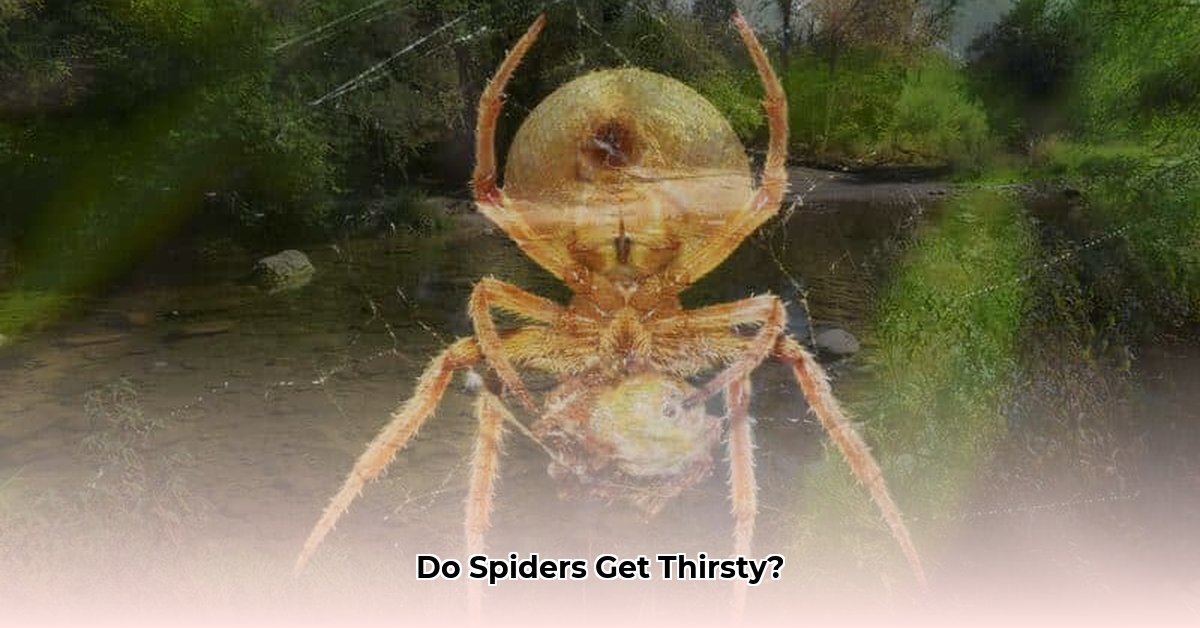Spiders, like all living creatures, need water to survive. While they may seem like desert dwellers, perfectly adapted to dry conditions, this isn’t entirely true. They rely on a variety of ingenious strategies to find and conserve water, showcasing their remarkable adaptability.
How Spiders Quench Their Thirst
Spiders exhibit fascinating behaviors and physiological adaptations to stay hydrated. Their water-seeking strategies vary depending on their environment and species, but several key methods stand out:
Drinking Directly
Spiders can drink water directly from available sources. When they encounter a dewdrop or puddle, they lower their bodies and use their chelicerae (mouthparts, often mistaken for fangs) and other specialized structures near their mouths to draw water in. This process utilizes capillary action, similar to how a thin tube draws liquid upwards. Pedipalps, small leg-like appendages near their mouths, help manipulate water droplets and guide them toward their mouth.
Webs as Water Collectors
Spider webs are multifunctional marvels. Besides trapping prey, they also collect moisture. Morning dew and condensation cling to the silken threads, forming tiny reservoirs that spiders can drink from. Some spiders even consume portions of their webs, recycling the silk and reclaiming any trapped moisture.
Hydrating Meals
Spiders don’t eat their prey whole. Instead, they inject enzymes that liquefy the insides, turning their meal into a nutritious, hydrating “smoothie.” This liquid provides both sustenance and essential moisture, especially crucial for spiders in dry environments.
Atmospheric Absorption
Some spiders, particularly those in humid climates, can absorb moisture directly from the air. Specialized hairs and book lungs (their respiratory organs) capture water molecules from the atmosphere, supplementing their other hydration strategies.
Desert Adaptations
Desert spiders have evolved remarkable water conservation techniques. Waxy coatings on their bodies minimize water loss, while slower metabolisms reduce their overall water needs. These adaptations allow them to survive extended periods with limited access to free water.
Providing Water for Pet Spiders
If you keep pet spiders, like tarantulas, providing a shallow dish of water is essential. Ensure the dish is not too deep to prevent drowning. Misting the enclosure regularly creates dew-like droplets, mimicking their natural environment and offering another hydration source. Monitor your spider for signs of dehydration, such as lethargy or a shriveled abdomen. Increasing humidity can help if needed.
How Long Can Spiders Survive Without Water?
The duration a spider can survive without water depends on various factors, including species, size, activity level, and environment. Larger, less active spiders in humid environments can typically go longer without water than smaller, more active species in dry climates. Some desert spiders can endure weeks or even months without direct access to water due to their remarkable adaptations.
Dehydration symptoms include sluggishness, a shriveled appearance, and difficulty moving. If you notice these signs in a pet spider, promptly provide a shallow water dish with pebbles or cotton balls for safe access.
The Science of Spider Drinking
Spiders utilize a combination of specialized structures and physiological processes to drink and maintain water balance:
- Chelicerae, labrum, and labium: These mouthparts work together to create a drinking tube, facilitating capillary action for drawing in water.
- Pedipalps: These leg-like appendages near the mouth aid in manipulating water droplets.
- Hemolymph: Similar to blood, hemolymph circulates nutrients and oxygen, and its volume is crucial for proper bodily functions.
- Digestive system: Processes water from food and drink.
- Malpighian tubules: Act like tiny kidneys, filtering waste and regulating water balance.
- Book lungs/tracheae: Primarily for respiration, these structures can also contribute to water loss, which is minimized by the spider’s exoskeleton and waxy cuticle.
Ongoing Research
Scientists continue to study spider hydration. Research areas include the specific mechanisms of water absorption, the role of various proteins in water balance, and how spiders adapt to different environments and climate change. New discoveries continue to enhance our understanding of these remarkable creatures.
By understanding spiders’ ingenious hydration strategies, we gain a deeper appreciation for their adaptability and resilience. This knowledge is also essential for responsible pet spider care, ensuring these fascinating creatures thrive under our care.
- Dora the Explorer Wipe-Off Fun: Safe & Mess-Free Activities for Little Explorers - April 18, 2025
- Does Lemongrass Repel Mosquitoes? Fact vs. Fiction + How to Use It - April 18, 2025
- Do Woodchucks Climb Trees?Fact vs. Fiction - April 18, 2025










